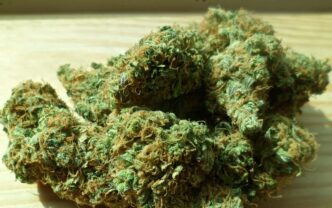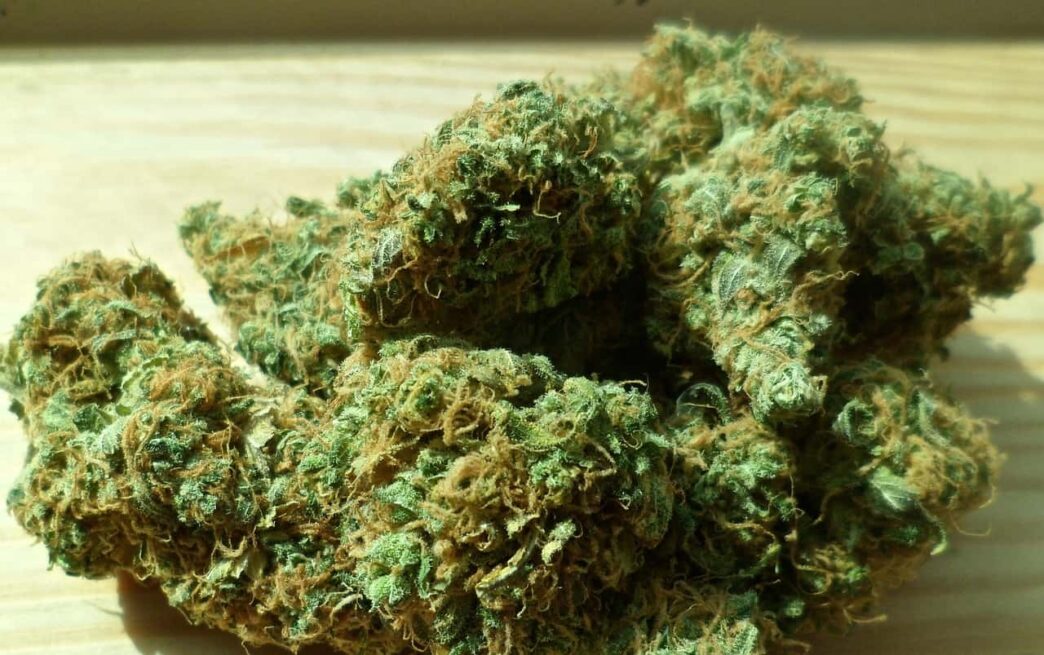Are you ready to dive into the world of cannabis strains? If you’re a fan of unique effects and bold flavors, then the Blue Cheese weed strain deserves a spot in your next smoking session. With its intense aroma reminiscent of blue cheese and its powerful effects, this strain is an intriguing choice for those seeking something out of the ordinary.
The science behind Blue Cheese’s distinctive effects lies in its genetic composition. This Indica-dominant hybrid crosses the legendary Cheese strain and Blueberry, resulting in a potent combination that delivers a euphoric and relaxing experience. The Blue Cheese strain is known for its calming and mood-enhancing effects, making it an excellent choice for stress relief and relaxation.
In this article, we will explore the genetics and chemistry behind Blue Cheese, shedding light on why it produces such unique effects. We’ll also delve into the terpene profile and cannabinoids present in this strain, uncovering the secrets behind its captivating aroma and therapeutic potential.
Join us as we deeply dive into Blue Cheese weed and discover why this strain is unlike any other.
What Makes Blue Cheese Weed Strain Unique?
Blue Cheese weed strain stands out from the crowd due to its distinct combination of flavors and effects. The name itself suggests its unique aroma, reminiscent of blue cheese. This strain is known for its spicy, skunky scent that can fill a room with its signature funk. The flavor profile of Blue Cheese is equally intriguing, with a creamy and slightly nutty taste that lingers on the palate.
But what truly sets Blue Cheese apart is its effects. This strain balances relaxation and euphoria, making it a favorite among recreational and medicinal users. The indica dominance provides a soothing body high, while the Sativa genetics bring a cerebral buzz that uplifts the mood. The result is a well-rounded experience that appeals to a wide range of cannabis enthusiasts.
The Science Behind the Effects of Blue Cheese Weed Strain
We need to delve into its genetic composition to understand why Blue Cheese produces such unique effects. As mentioned earlier, Blue Cheese is a cross between the Cheese strain and Blueberry. The Cheese strain, known for its distinctive aroma and relaxing effects, is a descendant of Skunk #1 and Afghani. Blueberry, on the other hand, is a legendary strain renowned for its sweet and fruity flavors.
The combination of these genetics gives Blue Cheese its characteristic traits. The Cheese lineage contributes to its calming and sedating effects, while the Blueberry genetics bring a touch of euphoria and mental stimulation. This harmonious blend of indica and sativa genetics results in a well-balanced high that can be enjoyed throughout the day.
Chemical Composition of Blue Cheese Weed Strain
Its genetic composition does not solely determine the effects of Blue Cheese. The chemical makeup of this strain also plays a crucial role in shaping its unique characteristics. Blue Cheese is rich in cannabinoids, particularly THC (tetrahydrocannabinol) and CBD (cannabidiol).
THC is the primary psychoactive compound in cannabis, responsible for the euphoric and intoxicating effects. Blue Cheese typically contains a moderate to high level of THC, which contributes to its potency. CBD, on the other hand, is a non-intoxicating compound known for its potential therapeutic benefits. While Blue Cheese is not particularly high in CBD, it may still contain trace amounts that can contribute to its overall effects.
The ratio of THC to CBD in Blue Cheese can vary depending on the specific phenotype and growing conditions. This variability allows users to choose a strain that aligns with their desired effects and preferences.
Understanding Terpenes in Blue Cheese Weed Strain
Terpenes are the aromatic compounds found in cannabis and other plants. They are responsible for the distinctive smells and flavors associated with different strains. In the case of blue cheese, terpenes play a significant role in creating an intense aroma and enhancing its effects.
The most prevalent terpenes found in Blue Cheese include myrcene, caryophyllene, and linalool. Myrcene is known for its soothing properties and is believed to contribute to the calming effects of Blue Cheese. Conversely, Caryophyllene has anti-inflammatory and analgesic properties, which may provide additional therapeutic benefits.
Linalool, commonly found in lavender, contributes to Blue Cheese’s unique aroma and is known for its relaxing and mood-enhancing effects. Combining these terpenes creates a sensory experience that is both enjoyable and therapeutic.
Medical Benefits of Blue Cheese Weed Strain
Beyond its recreational appeal, Blue Cheese also offers several potential medical benefits. The relaxing and mood-enhancing effects of this strain make it a popular choice for individuals seeking relief from stress, anxiety, and depression. The calming properties of Blue Cheese can help promote a sense of tranquility and relaxation, making it an ideal option for those looking to unwind after a long day.
Furthermore, the analgesic and anti-inflammatory properties of Blue Cheese may provide relief for individuals suffering from chronic pain conditions such as arthritis or fibromyalgia. The strain’s potential to alleviate pain and reduce inflammation makes it a valuable tool in managing these debilitating conditions.
It’s important to note that individual experiences may vary, and consulting with a healthcare professional is recommended before incorporating Blue Cheese into a medical treatment regimen. For the best options, check out the following article.
Dosage and Consumption Methods for Blue Cheese Weed Strain
When it comes to consuming Blue Cheese, finding the right dosage and consumption method is crucial for a positive experience. As with any cannabis strain, it’s best to start with a low dose and gradually increase as needed. This allows you to gauge your tolerance and find the optimal balance of effects.
Blue Cheese can be consumed through various methods, including smoking, vaping, and edibles. Smoking or vaping provides a faster onset of effects, while edibles offer a longer-lasting and more gradual experience. Experimenting with different consumption methods can help you discover the one that suits your preferences and desired effects.















